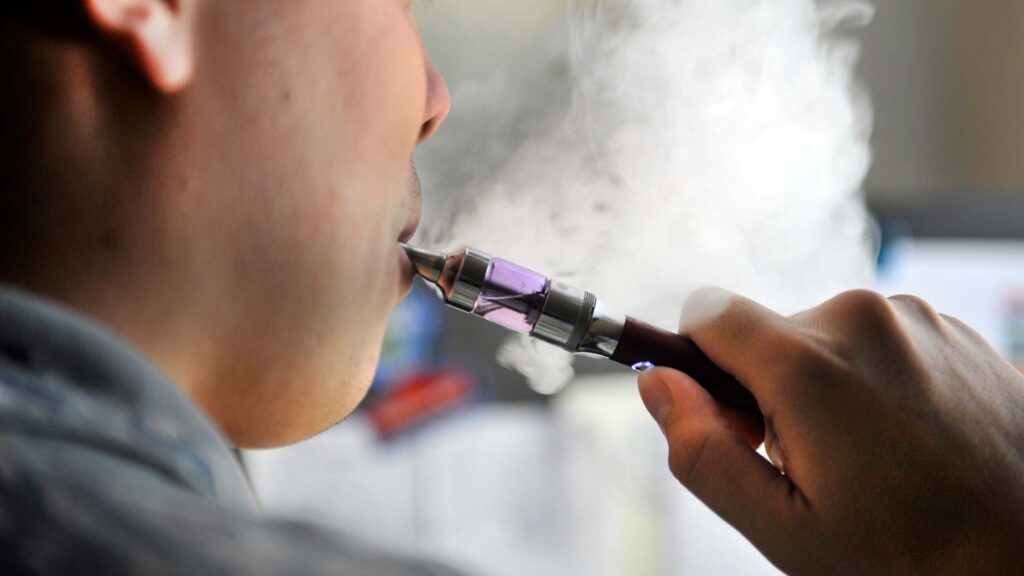What vapes should I avoid?

Vaping has become a popular alternative to smoking, with many individuals opting for electronic cigarettes or other vaping devices. While vaping is generally considered less harmful than smoking traditional cigarettes, it’s crucial to be aware of the potential risks associated with certain vapes.
Choosing Safe Vaping: A Guide to Avoiding Harmful Vapes
In this article, we will explore the factors that make some vapes potentially harmful and guide how to make informed choices for a safer vaping experience.
- Counterfeit Vape Products:
One of the most significant concerns in the vaping industry is the prevalence of counterfeit vape products. These imitation devices and e-liquids may look nearly identical to reputable brands, making it challenging for consumers to distinguish between genuine and fake products. Counterfeit vapes often contain substandard materials, poorly manufactured components, and questionable e-liquids, posing serious health risks.
To avoid counterfeit products, it is essential to purchase vapes from reputable retailers, both online and offline. Stick to well-known brands with a track record of quality and safety.
- Poor-Quality E-liquids:
The e-liquid used in vapes plays a crucial role in the overall safety of the vaping experience. Low-quality or poorly manufactured e-liquids can contain harmful substances, including contaminants and additives that may pose health risks when inhaled. Some ingredients used in cheaper e-liquids may not meet safety standards, leading to potential respiratory issues.
When choosing e-liquids, opt for products from reputable manufacturers that adhere to quality standards. Check for third-party lab testing, which ensures that the e-liquid has been tested for purity and safety.
- Lack of Regulation:
The vaping industry has faced challenges related to a lack of consistent regulations. This has allowed the proliferation of products with varying safety standards. Some vapes may not undergo rigorous testing or adhere to specific manufacturing guidelines, leading to potential hazards for consumers.
To mitigate this risk, it is advisable to research the regulatory environment in your region and choose vapes that comply with established safety standards. Look for products that have undergone third-party testing and are regulated by relevant authorities.
- High Nicotine Content:
While nicotine is an addictive substance found in both traditional cigarettes and many vaping products, some vapes deliver significantly higher nicotine levels than others. High nicotine content can increase the risk of addiction and may have adverse effects on cardiovascular health.
When selecting vaping products, be mindful of the nicotine concentration. Consider starting with lower levels if you are new to vaping or gradually reducing nicotine intake over time. Additionally, choose vapes that allow you to customize nicotine levels based on your preferences.
- Unsafe Battery Practices:
Vape devices are powered by rechargeable batteries, and improper handling or the use of substandard batteries can lead to safety issues. Reports of vape batteries exploding or catching fire have raised concerns about the overall safety of vaping.
To minimize the risk of battery-related incidents, follow the manufacturer’s guidelines for charging and using batteries. Use only recommended chargers and avoid overcharging. Additionally, be cautious of devices with poor build quality or those lacking safety features, as they may pose a higher risk of battery issues.
Conclusion:
In conclusion, while vaping is generally considered a less harmful alternative to smoking, it is crucial to be vigilant and make informed choices to ensure a safe experience. Avoiding counterfeit products, choosing reputable brands, selecting quality e-liquids, considering regulatory compliance, and practicing safe battery handling are essential steps in minimizing potential risks associated with vaping. By staying informed and making responsible choices, individuals can enjoy the benefits of vaping while prioritizing their health and well-being.
